
|   |

|   |
Gudiya Sambhrama: The Bengaluru Temple Festival July 12, 2011 The Bengaluru Temple Festival was organised by the Heritage Trust and was envisioned with the intent of reviving the ancient culture of Heritage spaces being centres of performing arts and learning. It also provided an opportunity for the temple going public apart from the general art followers to experience and understand the inseparable bonding between spirituality, culture and traditional arts. The temple is a creation of an open culture that recognises and understands the diversity of people's approach to the Supreme. Indian culture which sees divinity in the sacred spaces within temples stands unbroken and connected for thousands of years bringing forward time-tested practices and wisdom. The temple is a place where there is a mingling of the energy of the temple with the subtle silence in music and the stillness in dance. The event was organised in 21 heritage temple spaces ranging from a thousand years to just a decade bringing together mystical chants, the beauty of architecture, performing art, visual art, learning, spirituality, festivity and celebration. In addition to the dance and music performances there were special events like thematic Rangoli art and Dasara doll display organised during the Navaratri celebrations inclined to promote our tradition and culture. Rangoli can be termed Sacred Geometry and its practice (sadhana) was a part of a spiritual process of converting spaces into sacred environments. People experience divine and metaphysical transformations by just being around such environments. 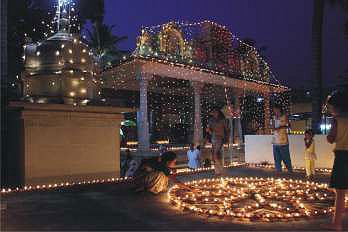 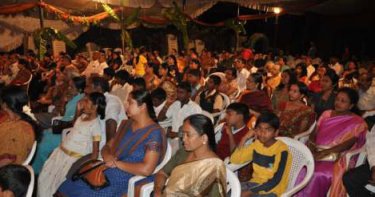 The festival started off on September 12, 2010 in Karanjee Anjeneyaswami Devasthana in the presence of His Holiness Shri Abhinava Vidhyashankara Bhartiswamy of Avani Shankara Mutt. The inaugural performances for the festival were by Chithkala Nritya Shala, Raadha Kalpa Dance Company and students of Sangeet Ashram. Cleaning and Greening campaign was flagged off by His Holiness Shri Gangadharendra Saraswati Mahaswamyji of Sri Sonda Swarnavalli Mutt in October in Malleswaram. This served as a wonderful opportunity for devotees to participate in the cleaning of sacred places and also raised the awareness of spreading greenery among the public. Sacred trees, namely the Banyan, Neem, Peepal, Palasha and Bilva were planted in many temple premises and distributed freely among the public. One of the main drives undertaken was also to ban the use of plastics in temples. Ramayana Parayana was organized in Karanji Anjaneyaswamy Devasthana in Basavanagudi to celebrate the Navarathri festival. A unique narration of the entire Ramayana was unfolded with performances by renowned artistes while the story tellers held all the episodes of different “Kandas” together. A fine-art artist painted episodes on the spot while the Rama keerthanes were sung during Sri Rama's pattabhisheka. While the Mysore Dussera celebrations were in full swing, Dussera dolls were arranged on the seven steps with dolls related to the story of Sri Krishna and were exhibited along with a beautiful rangoli on all the ten days in Govardhanagiri Devasthana of Puthige Mutt in Basavanagudi.  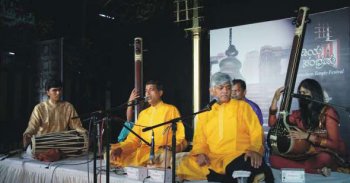 The music and dance festival of Gudiya Sambhrama was held between 11 Feb and 19 March 2011 across 21 temples in Bengaluru. The main stage was put up at 6 of these spaces and a very special ambience was created with the temple area and structure lending itself to create an atmosphere that was serene and sacred. Around 238 artistes of repute from across India brought to the people different genres of classical dance, music, puppetry and harikatha in these spaces which are filled with history and culture.  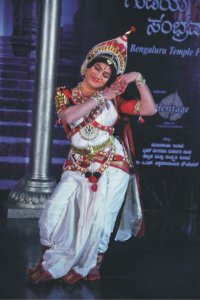 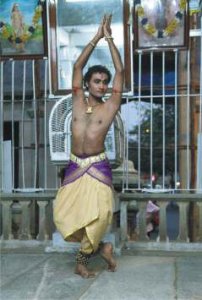 Gudiya Sambhrama had selected 21 temples which were grouped into six clusters. Apart from the main stage performances, artists also performed inside each of the 21 temples as part of the sangeetha and nrithya upachara. The highlight of Gudiya Sambhrama was the devopacharas as this practice is slowly fading away. Artistes found the devopacharas inspiring and uplifting, they have offered to dance for the devopacharas in the future. In between the programs, a short description about the temples was presented which reflected the history and architectural wonders of the temple. 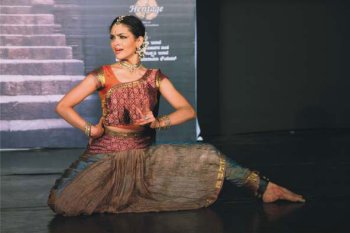 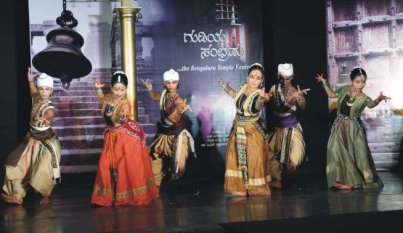 Heritage took all the measures to take care of the outstation artistes and their hospitality. Service apartments were booked in advance to make them comfortable and food was arranged according to their requirements. Transport was arranged for their arrival and departures and also to the program venue. Two green rooms besides performing stage in all the venues were organized to help the artists change in between the performances. All artistes including their Gurus were blessed with divine chantings by the pradhana archakas while they were given a memento and a book about temples in a cloth bag along with a medicinal plant to emphasize on the green drive and to avoid plastics.  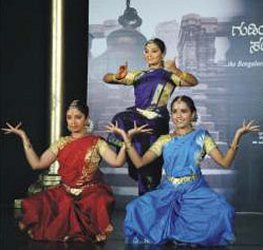 Gudiya Sambhrama concluded in Sri Venkataramana Swamy Devasthana, popularly known as Kote Devasthana in KR Market area. After the devopachara, the utsava murthy was taken on a procession around the sanctum sanctorum inside the temple premises and all the artistes and organizers joined that procession. The idols were kept decorated in front of the main stage so that all the artists accordingly dedicated their performances. Honourable Chief Minister of Karnataka Sri Yedyurappa was to preside over the festival but due to unforeseen circumstances, he could not participate. He however did send his wishes through a representative of the CM's office. Sri Govind Karjol, Honorable Minister for Kannada and Culture attended the program in spite of his busy schedule. He promised greater measure of help for the festival from his department. Sri Nandakumar, Commissioner for Religious and Temple Endowment Board, was very pleased with the festival and encouraged the initiative and assured his support in lieu of making this an annual state-wide event. Gudiya Sambhrama aspires to be the most sought after platform for performing arts in the international arena. The ambitious plans of the Heritage team coupled with the unrelenting support the festival received in the inaugural edition from all quarters of the society including the performing artistes, temple managements, government bodies and functionaries, have only strengthened the resolve to ensure that the future editions of the festival reach out to many more temples in Karnataka giving greater number of artistes the fulfillment of performing in heritage spaces. Apart from this, Heritage intends to bring learning into the temple precincts with classes on Ithihasa Puranas, classical music, sloka chanting and Sanskrit for a start. Where necessary, they would also like to make an innovative involved temple cleaning process by the community. For a beginning, they will start nrityopachara in 2 or 3 temples on a regular basis. The intention is to revive the bonds between temples and art forms that can be achieved with the renewed support of the Government of Karnataka in addition to raising the spiritual consciousness of the society. The festival will serve as the fulcrum in spreading awareness about our rich cultures and traditions among the future generations. |